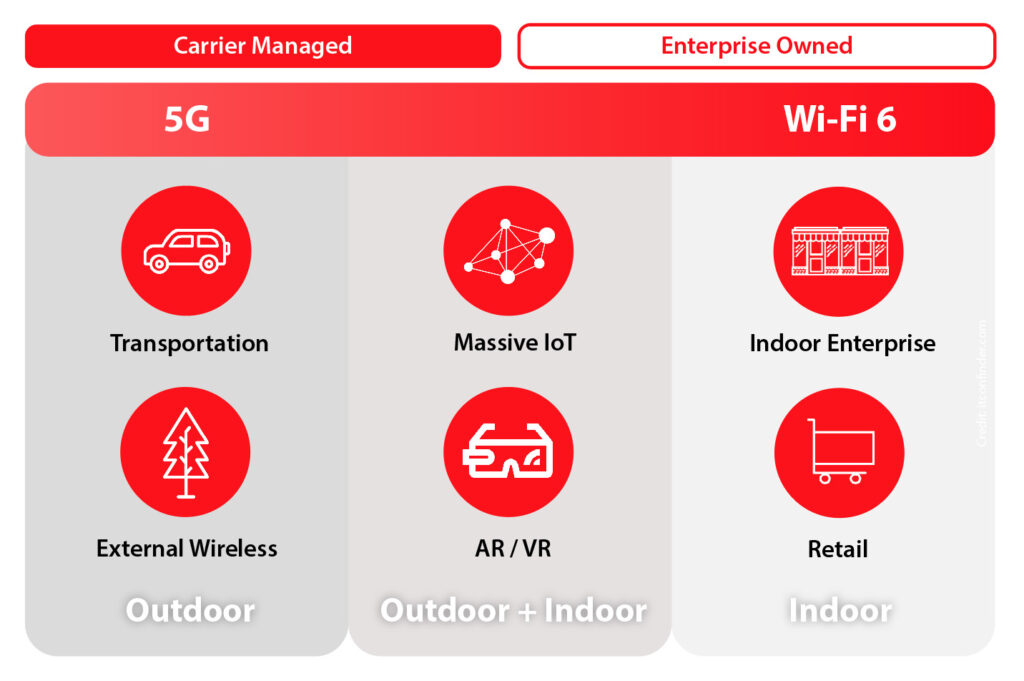John Fitzpatrick, Product Manager at Solsta, examines the latest Cellular and Wi-Fi standards and what ‘5G in the real world’ means to customers.
The promises that we hear about 5G are higher speed connectivity, lower latency, and coverage everywhere; the reality is you may get one or two of these features but not all of them at the same time.

The 5G standard utilises radio bands from sub GHz to 40 GHz. In rural environments where cell towers are few and far between narrowband IoT (NB-IoT), sub GHz spectrum will certainly provide improved coverage, but this comes at the cost of speed and latency. Superfast connection speeds will be realised at higher frequencies (25-40 GHz), but at the cost of range. Users will need to be within a mile of the cell tower and urban objects – such as buildings, vehicles, trees – are likely to have decremental effects to the signal strength.
5G licensed spectrums supress the potential interference that may occur within the unlicensed Wi-Fi spectrums, which are shared by many other wireless technologies like Bluetooth and microwave ovens. 5G will be supplied by cellular wireless carriers but can be built as a private network by deploying your own access points, just like with Wi-Fi.
The high GHz band architecture for 5G requires more radio access points. Users for indoor space will need to assess the infrastructure – possibly deploying indoor microcells, repeaters and distributed antennas – to solve indoor 5G service issues.
5G is aimed for truly mobile connectivity such as Public Transport and Safety Vehicles, and
External Environments (e.g. mining; oil & gas extraction; farming; and manufacturing, campus or leisure areas)
5G offers advantages in the IoT market (NB-IoT, LPWAN) and as the 5G standards mature, the technology will improve its options for low-power IoT connectivity.
Over the coming years, the 5G rollout will start in mainstream cities and specific geographic locations; 4G technology will remain prevalent for several years. Users will need new devices, dongles, and routers to connect to 5G services, and IoT devices will need specific cellular compatibility to connect to 5G.
What is Wi-Fi 6?
Currently, Wi-Fi has established itself as the universal standard for connecting mobiles, laptops, tablets and other portable or fixed devices to a local area network.
Wi-Fi 6 (802.11ax) is the latest version of Wi-Fi and brings the promise of increased speed, low latency, improved aggregate bandwidth and advanced user traffic management, which will help reduce disconnects.
Both 5G and Wi-Fi 6 are based on Orthogonal Frequency Division Multiple Access (OFDMA). Wi-Fi 6 is less prone to interference than previous Wi-Fi standards, requires less power (which prolongs device battery life) and has improved spectral efficiency. Essentially, it is better at packing data into a signal.
Wi-Fi 6 offers full support for technologies like multiuser, multiple input, multiple out (MU-MIMO) connection quality, which will vastly improve compatible mobile devices; this should speed up content delivery. Wi-Fi 6 is also backwards compatible with older Wi-Fi standards.
And the Winner…?
The reality is that both 5G and Wi-Fi 6 are evolving in parallel; the two are largely complementary. One maybe more suitable based on different environments but there are overlaps for some user cases. This will make for an interesting competitive environment from this year onwards and into the late 2020s.
Solsta is here to support you on these technologies, with products in our portfolio including 2J Antennas, Antenova, Digi, Microchip, Quectel, Redpine, Robustel, Silicon Labs, SparkLAN, and many others.
